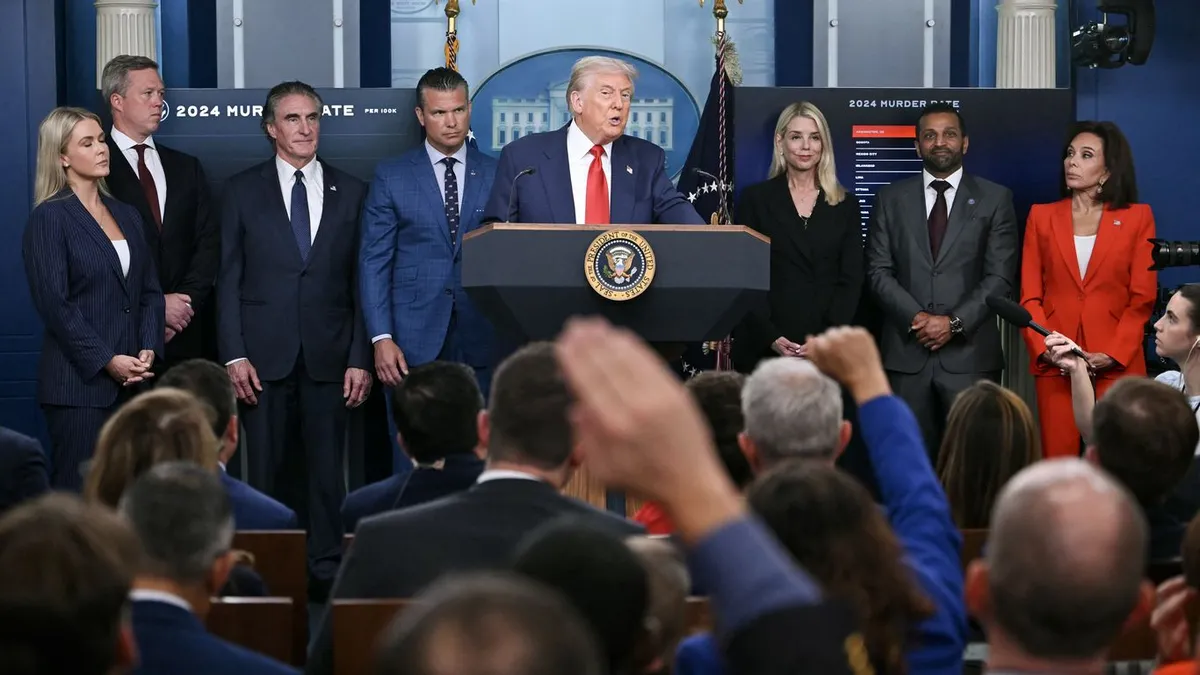
On Monday, President Trump made a controversial move by temporarily placing the Washington, D.C., police under federal control. This decision raises significant questions about the limits of presidential authority and highlights Trump's ongoing focus on Democratic-led cities, even as national crime rates show a decline. The implications of this action are profound, marking a rare instance of federal intervention in local law enforcement.
Trump's takeover of D.C. police is a clear escalation of federal control, a tactic not commonly seen in American governance. By choosing to target cities like Los Angeles, Baltimore, Oakland, New York, and Chicago—cities he described as "bad, very bad"—Trump seems intent on further testing the boundaries of his presidential powers. This move not only reflects his approach to crime control but also his long-standing narrative surrounding immigration and its attributed impact on crime.
Despite the President's assertions, crime rates in Washington, D.C. have been contradicted by data from the Justice Department, which reported that violent crimes are currently at a 30-year low. In fact, reports indicate that murder rates in the U.S. dropped by 15% last year, with overall crime rates falling by 5% nationally. Furthermore, a study from the Major Cities Chiefs Association revealed a remarkable 19% decrease in homicides across major U.S. cities in the first half of 2025. Such statistics raise questions about the rationale behind Trump's intervention in cities with improving crime metrics.
Trump's decision to deploy the National Guard to Los Angeles amidst protests against immigration arrests has sparked legal challenges from California Governor Gavin Newsom, who opposes the federal intervention. Trump's declaration, "We’re not gonna lose our cities over this," indicates his commitment to extending federal control, which may provoke further tensions between state and federal authorities.
Trump has targeted several cities for intervention, despite evidence suggesting a decline in crime rates in these areas:
Oakland, CaliforniaIn 2024, Oakland reported significant decreases in all tracked crime categories. All violent crimes dropped by 19% compared to 2023, with homicides down 32% and motor vehicle theft also decreased by 32%. Robberies and burglaries saw reductions of 24% and 48%, respectively.
Chicago, IllinoisTrump criticized Chicago's no cash bail policy, suggesting he would seek to change it, despite it being a state law. Recent data indicates that crime in Chicago has actually fallen by 15% since the elimination of cash bail. Homicides decreased by 37%, robberies by 36%, and motor vehicle thefts by 44% since 2023.
Baltimore, MarylandBaltimore City has seen a 17% decrease in violent crime over the last year, according to local police department data. Homicides dropped by 27%, and carjacking incidents fell by 20%, further countering Trump's narrative of rampant crime in these cities.
New York CityNew York City also reported a 3% decline in the overall crime index in 2024. Notably, robbery offenses decreased by 27%, and murders fell by 4%, showcasing the effectiveness of local law enforcement efforts.
As Washington, D.C. braces for a possible deployment of the National Guard and the California trial unfolds, the implications of Trump's federal control over local police remain to be seen. This situation highlights the complex and contentious relationship between Trump and D.C. leadership, as well as the ongoing debate over the appropriate balance of power between state and federal authorities in addressing crime issues.